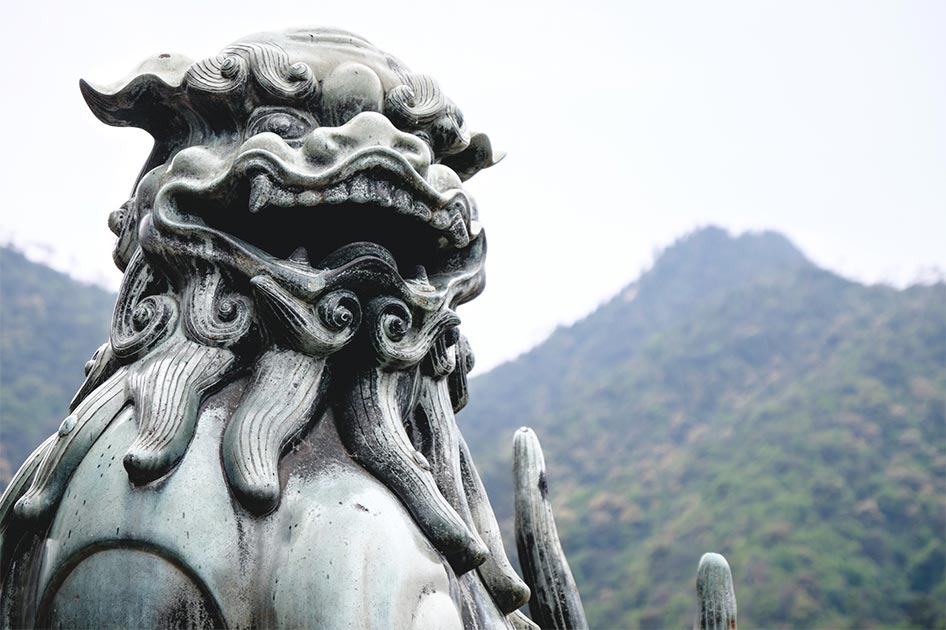Massive Megaliths Found in Japan Shed New Light on Ashikaga Shogunate
Archaeologists excavating at the residence of the Ashikaga Shogunate family in Japan have unearthed a collection of eight enormous garden stones.
The shogunate, was the hereditary military dictatorship of Japan that existed between 1192–1867 AD and the shogun answered directly to the emperor of what was a feudal society with total control of a military that enforced total control over the people of the country. Buried in the southeastern part of the site, eight huge stones weighing up to 9.8 tons and measuring 2.7 meters (8.9 ft) long are believed to have been a demonstration of “immense power and social influence” held by the shogunate.
On April 10, the Kyoto City Archaeological Research Institute announced that seven of the eight huge stones were found situated around the site of a pond in the former residence of the Ashikaga Shogunate, also known as the Muromachi Shogunate, located in Kyoto’s Kamigyo Ward, which was the feudal military government of Japan during the Muromachi period from 1338 to 1573 AD, when Kyoto was the capital of Japan.
Megaliths Were Devices of ‘Total’ Control for the Ashikaga Shogunate
The group of eight stones were situated relatively close to each other and measure between 95 centimeters (3.1 ft) and 2.7 meters (8.9 ft) high and the archaeologists told the newspaper Asahi Shimbun that the stones were “unusually huge” compared with other examples found at garden sites of ruling elites. Furthermore, the eight stones were “undoubtedly” raised to show off the great power wielded by the shogun and his family.
Massive stone at site of #shogun’s residence hints at immense power : The Asahi Shimbun#Japan #AshikagaShogunate #MuromachiPeriod
https://t.co/h6gUhFrkxs— Asahi Shimbun AJW (@AJWasahi) April 14, 2020
- Medieval Japanese Weapons Influenced Culture Long After the Middle Ages
- Sensoji Temple, Tokyo’s Throbbing Heart of Japanese Buddhism
- Remains of castle built by powerful Japanese feudal leader unearthed in Kyoto
The residence complex was completed in 1381 AD during the reign of the third Muromachi shogun, Ashikaga Yoshimitsu (1358-1408), who used it as his headquarters and primary residence, this expansive archaeological site spans around 7,600 tsubo, and with one tsubo measuring to about 3.3m 2 (10.8ft 2) the excavation zone is about 25,080m 2 (82,283ft2).
The institute said the stones were placed during the rule of the eighth Muromachi shogun, Ashikaga Yoshimasa (1436-1490), who also constructed the wonderful Ginkakuji temple (Silver Pavilion) in the Sakyo ward of Kyoto representing the Higashiyama Culture of the Muromachi period.

Temple of the Silver Pavilion in Kyoto, Japan, which was built by Yoshimasa of the Ashikaga Shogunate. (Richie Chan / Adobe stock)
The Controversial Shogun in a New Light
Hisao Suzuki, a professor of archaeology and history of gardens at Kyoto Sangyo University, told Asahi Shimbun that the excavation was carried out from January through April 9 ahead of construction of a new building, and that this ancient residence comprises of buildings in the northern aspect and a sprawling garden that encloses a pond to the south, and the researchers found the pond stretching at least 45 meters (148 ft) north to south and about 60 meters (197 ft) east to west.
According to Suzuki, until the discovery of this, Ashikaga Yoshimasa “hadn’t been held in particularly high regard” for his political mastery having famously triggered the Onin War of 1467-1477 AD, which began what is known as the bloody “Warring States period,” which was characterized by a new type of brutal warfare, as well as bureaucratic and military reforms and consolidation. However, the archaeologist says the discovery of the huge stones demonstrates that the controversial ruler “excelled at fostering culture and engineering technology.”

Portrait of Shogun Yoshimasa from the Ashikaga Shogunate. (Tosa Mitsunobu / Public domain)
Eight Monuments of the Warring States Period?
The Warring States period in Japan (Sengoku jidai) lasted for a century between 1467 to 1567, until the creation of the Tokugawa Shogunate in 1603 AD, bringing about many innovations in the arts of Japanese warfare such as the use of cavalry with the traditional use of war chariots becoming less popular.
The 2006 book, Pre-Modern East Asia: A Cultural, Social, and Political History, informs that the emergence of mass-infantries resulted in much more brutal warfare with heavy iron weapons and armor being replaced by more mobile bronze. And from this period onwards various states competed with each other by mobilizing their massive armies of infantry and cavalry to war, which required new training programs and supply systems, with new controls to manage such large forces that ranged from tens of thousands to “several hundred thousand men.”
The deadly crossbow was the most used long-range weapon of this period which was easily mass-produced, and the training of new crossbowmen was relatively simple, but infantrymen deployed a variety of weapons, including the dagger-axe measuring from 2.7 meters to 5.5 meters (9 to 18 feet), consisting of a thrusting spear with a slashing blade, which was an extremely popular weapon in various kingdoms. Thus, the eight stones stand testimony to a new social and military dictatorship that saw the deaths of hundreds of thousands of people.
Due to the new coronavirus outbreak, the excavation site is currently being backfilled and the team of archaeologists regret that no on-site press briefing will be held, so those eight megaliths will have to remain buried for the foreseeable future.
Top image: Japanese megalith in a garden as representation of the Ashikaga Shogunate stones found. Source: Samuel Ponce / Adobe stock
By Ashley Cowie



















